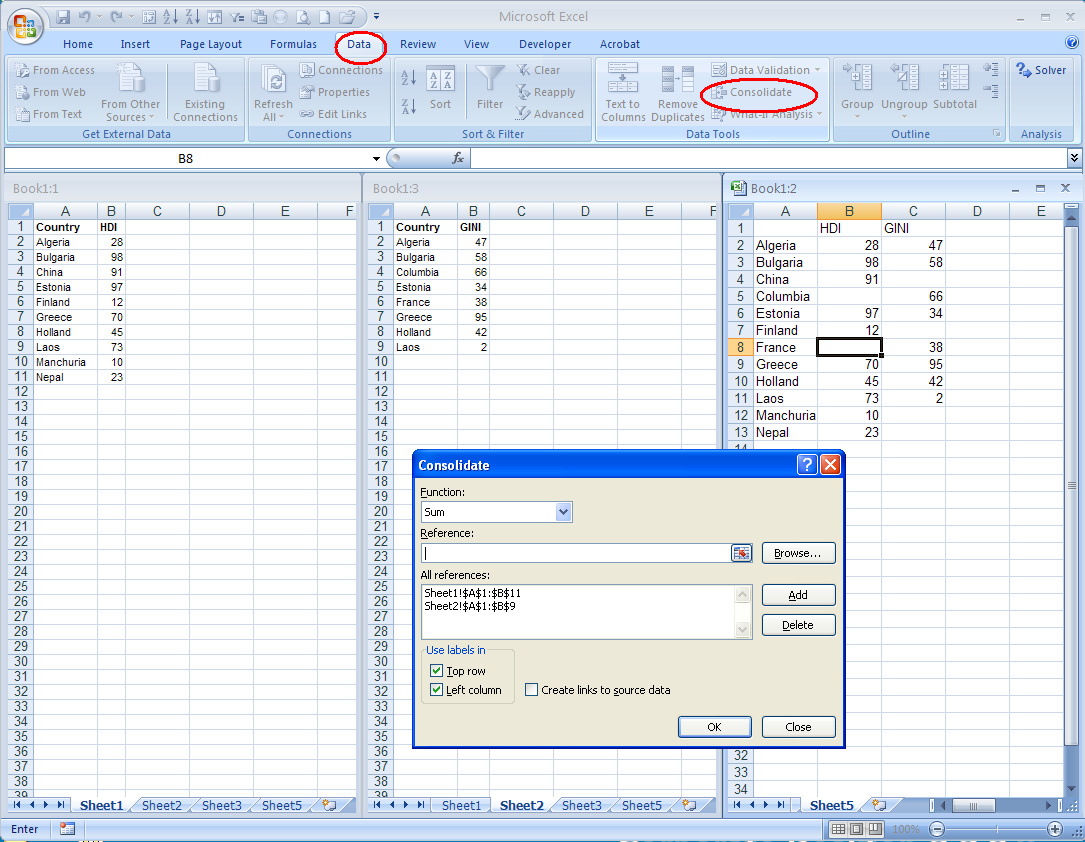Merge Excel Sheets: Quick and Easy Guide

Merging Excel sheets is a common task for professionals dealing with data across various sectors, from finance to education. It often involves consolidating information from different sources to make comprehensive reports or analyses. Whether you're tracking sales, managing inventory, or compiling research, knowing how to combine multiple spreadsheets efficiently can save you a lot of time and ensure data integrity. In this guide, we'll walk you through the steps to merge Excel sheets quickly and easily.
Understanding Your Data Before Merging

Before you start merging, understanding your data is crucial. Here are key steps:
- Identify the sheets: Know which sheets you’re merging and the purpose.
- Data Structure: Check if all the sheets have a similar structure or if they are vastly different.
- Check for Duplicates: Look for duplicate entries that could skew your results.
- Header Rows: Ensure the sheets have consistent header rows for a seamless merge.

Manual Merging with Copy and Paste

For smaller datasets or when you prefer a hands-on approach:
- Open Sheets: Open all the Excel sheets you wish to merge.
- Copy Data: Copy the data you need from each sheet, including headers.
- Paste into Master Sheet: Create a new sheet or open an existing master sheet, and paste the copied data into it.
- Verify and Format: Ensure the data is aligned correctly and format as needed.
🔍 Note: Use ‘Paste Special’ for formulas or formats if required.
Using Excel Functions to Merge Sheets

For larger datasets or frequent merging, here are some functions and formulas:
| Method | Formula/Steps |
|---|---|
| VLOOKUP | =VLOOKUP(search_key, range, index, [is_sorted]) |
| Power Query | Create Queries for each sheet, then Merge or Append Queries. |
| Consolidate | Under the Data tab, use Consolidate to combine data from multiple ranges. |

VLOOKUP Function

The VLOOKUP function allows you to merge data based on a common column:
- Search Key: The value to search for in the first column of your lookup range.
- Range: The table of data from which to retrieve the value.
- Index: The column number in the range containing the value you want to retrieve.
- [Is_Sorted]: Specifies whether the first column of your range is sorted (TRUE or FALSE).
Power Query for Dynamic Merging

Power Query provides an extremely versatile way to manage data:
- Import Data: Import the sheets you want to merge.
- Merge: Choose ‘Merge’ in Power Query to combine data from multiple sheets.
- Append: Alternatively, use ‘Append’ to combine rows from various sheets.
- Transform Data: You can then manipulate the data further before loading it into Excel.
🌟 Note: Power Query offers a no-code solution for complex data merging tasks.
Automating the Merge with VBA

For frequent and repetitive tasks, VBA can automate the merging process:
- Open VBA Editor: Press Alt + F11 to open the VBA editor.
- Write Code: Write a macro to open, copy, and paste data from multiple sheets.
- Run Macro: Execute the macro to merge sheets automatically.
Sample VBA Code for Merging

Sub MergeSheets() Dim ws As Worksheet Dim lastRow As Long Dim lastColumn As Long Dim mergedSheet As Worksheet Dim Source As Range Dim Target As Range' Assuming sheet names are Sheet1, Sheet2, Sheet3, and so on For Each ws In ThisWorkbook.Worksheets If ws.Name <> "Sheet1" Then ' Change "Sheet1" to the name of your master sheet lastRow = ws.Cells(ws.Rows.Count, "A").End(xlUp).Row lastColumn = ws.Cells(1, ws.Columns.Count).End(xlToLeft).Column Set Source = ws.Range(Cells(1, 1), Cells(lastRow, lastColumn)) Set Target = ThisWorkbook.Sheets("Sheet1").Range("A" & ThisWorkbook.Sheets("Sheet1").Rows.Count).End(xlUp).Offset(1, 0) Source.Copy Destination:=Target End If Next ws
End Sub
⚠️ Note: Always ensure you have a backup of your data before running automation scripts.
To conclude, merging Excel sheets can be approached in several ways, each with its advantages depending on the size of your data, the frequency of merging, and your familiarity with Excel tools. Manual methods are great for quick fixes, but for larger or repetitive tasks, functions like VLOOKUP, Power Query, or VBA provide more robust solutions. Remember to always verify your data after merging to ensure accuracy, and consider automation to streamline your workflow. Each method presented here offers flexibility and power, enabling you to handle data with precision and efficiency.
Can I merge sheets with different column names?

+
Yes, you can, but you’ll need to adjust your approach. With Power Query or VBA, you can rename columns or align them based on their content. Using manual methods, you might have to reorganize data manually before merging.
What happens if my data has duplicates when merging?

+
Duplicates can either be combined or removed, depending on your need. Power Query can handle duplicates smartly by appending data or merging with specific rules to treat duplicates.
Is there a way to merge Excel sheets from different workbooks?

+
Absolutely. Power Query is particularly useful for this. You can import sheets from different workbooks into the same Query, then merge or append them as required.
How do I merge data if the sheets have different structures?

+
Structural differences require more work. You might need to align data manually, or use Power Query or VBA to match and merge data based on content rather than structure.